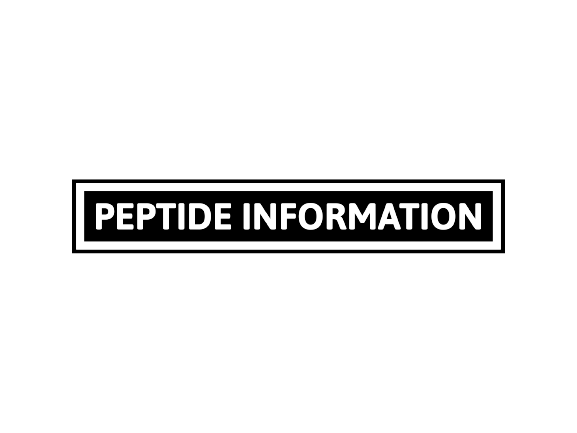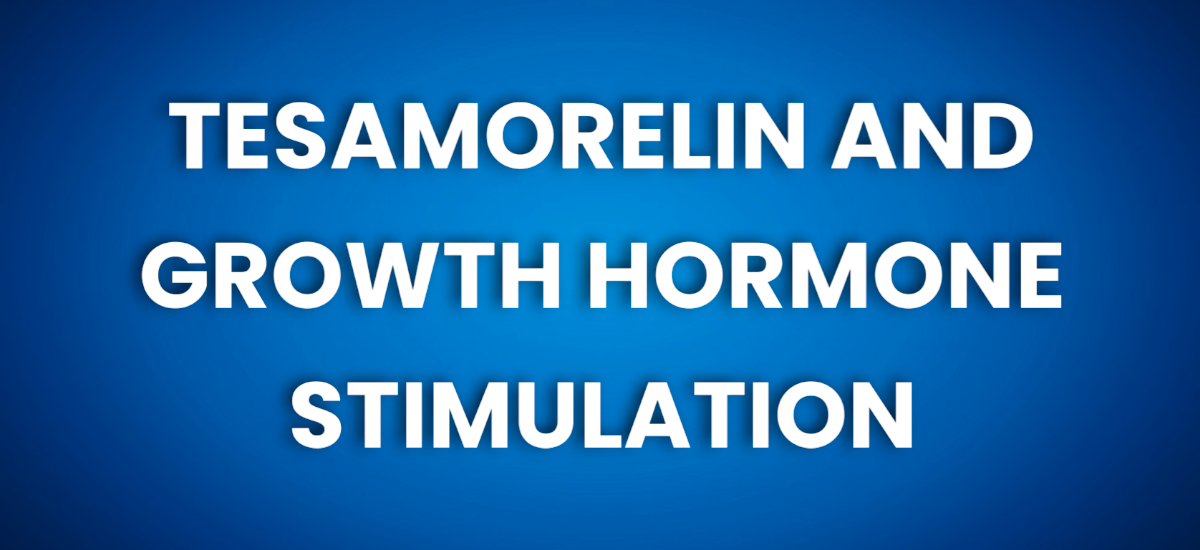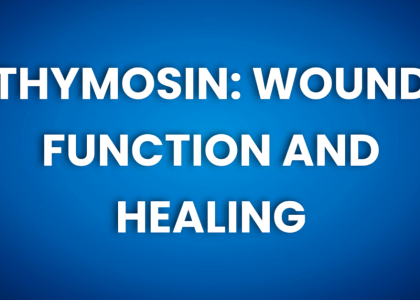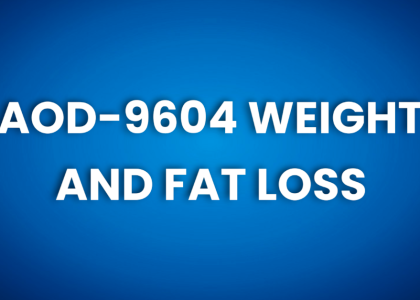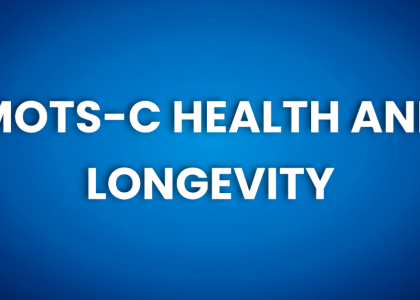Tesamorelin is a synthetic peptide hormone that is grabbing the attention of researchers for its promise to address obesity-related conditions.
What is Tesamorelin Peptide?
Tesamorelin, also known as Egrifta, is a synthetic form of growth hormone-releasing hormone (GHRH). Tesamorelin stimulates the pituitary gland in your brain to promote increased production of human growth hormone (HGH) [5].
This stimulation encourages your body to produce more human growth hormone (HGH). Studies have shown that this increased HGH production can lead to reduced fat mass, especially around the abdomen [1].
The Birthplace of Tesamorelin: The Lab
Tesamorelin was first developed for medical use. Scientists found they could create this unique compound, rather than waiting for our bodies’ slow biological processes.
Although man-made, tesamorelin mimics something very natural – GHRH – a critical part of our hormonal system responsible for regulating growth and metabolism among other things. Research indicates that when introduced into our systems artificially via injections or nasal sprays etc., it works exactly like naturally occurring GHRH would do [1].
Aimed at Obesity-Related Conditions
With obesity becoming a global health crisis, the search for effective treatments is critical.
When tesamorelin triggers the release of extra growth hormones in your system, fat cells start getting instructions to break down at an increased rate [1].
The Impact on Body Composition
Tesamorelin’s primary impact is on body composition. This doesn’t mean just losing weight or shedding pounds; rather, it’s all about improving proportions between lean muscle mass and fat tissue within your body. Tesmorelin improves overall physique [2].
Growth Hormone Release Mechanism
It might be tempting to think that injecting yourself with lots of synthetic GRFs will cause your pituitary gland to flood out enormous amounts of human Growth Hormones (HGH). But in actuality, our bodies have built-in checks and balances [6].
The pituitary gland is one of them. It won’t just release growth hormones because it’s been told to do so, but will instead consider if the timing is right or if your body needs more HGH. These checks and balances within the body ensure everything moves at the right time [4]
Potential Side Effects of Tesamorelin
While tesamorelin has shown promising benefits, it’s essential to consider the potential side effects. Some people may have various reactions, yet a few regular ones have been observed in clinical trials.
Headaches and Dizziness
A common side effect experienced by some individuals is headaches. They’re usually mild and go away on their own with time. Alongside this, dizziness can also occur when starting tesamorelin therapy [7].
Nausea and Fatigue
Nausea is another possible side effect associated with tesamorelin use. Some people report feeling tired or fatigued as well – these symptoms often lessen as your body adjusts to the peptide [7].
Increase in Appetite
An increased appetite might seem like an odd side effect for a substance used to treat obesity-related conditions; however, it’s one that some users report experiencing. If you notice any sudden changes in your eating habits while using this peptide, make sure you discuss them with your medical professional [7,8].
The majority of these side effects tend to not be severe, but they should never be ignored because everyone reacts differently to medication and treatments like peptides.
- If you experience persistent headaches or extreme fatigue while using tesamorelin, seek immediate medical attention.
- Mild nausea can typically be managed at home; still, talk about it during your next appointment if it persists over time.
- If an increase in appetite leads to significant weight gain, you may need to reconsider tesamorelin or adjust your diet.
Who Should Use Tesamorelin?
The main group who should be using tesamorelin are researchers conducting clinical trials. This peptide has shown promising results in treating obesity-related conditions by reducing fat mass and improving body composition – but there’s still so much we don’t know.
Medical Professionals Supervising Treatment
Apart from researchers, medical professionals also come into play here as supervisors for those enrolled in clinical trials or off-label treatment regimes.
Limited Use Among Patients
Patient usage is not widespread yet due to a lack of FDA approval beyond HIV-associated lipodystrophy treatment.
Where to Buy Tesamorelin Peptide
If you’re interested in purchasing tesamorelin peptides, the first place many people consider is online suppliers specializing in research chemicals and peptides. Sites such as Researchchemical.com offer high-quality, third-party-tested research compounds.
Before making your purchase, make sure to do some homework on the supplier’s reputation. Check for customer reviews or scientific community recommendations – it will give insights into their product quality and reliability. Researchchemical.com has great reviews and pays special attention to each order.
Contacting Physicians or Medical Professionals
If navigating through numerous online sources feels overwhelming, contacting physicians or medical professionals specializing in research chemicals might help guide you toward reliable providers. Visit our database for a list of doctors. Remember that its use is strictly for research purposes, not intended for human consumption without proper supervision.
Safety Precautions When Using Tesamorelin
When handling tesamorelin, a synthetic peptide hormone, it’s vital to take safety precautions. It starts with understanding the proper storage and handling procedures.
Proper Storage of Tesamorelin
Tesamorelin should be stored in a cool, dry place away from light. The ideal temperature for storing this peptide is between 2-8 degrees Celsius or about 33 degrees Fahrenheit. But remember, don’t freeze it. Research has shown that extreme temperatures can degrade peptides like tesamorelin and reduce their effectiveness [3].
Avoid Direct Contact With Skin Or Eyes
If by any chance the powder comes into contact with your skin or eyes rinse immediately with plenty of water and seek medical help if needed.
Safe Disposal After Use
All used vials containing residues of tesamorelin should be disposed of properly following local regulations on biomedical waste management because improper disposal may harm the environment (EPA guidelines).
Get Guidance From Medical Professionals
Before starting any new peptide research, it’s important to get guidance from medical professionals. They can give you more specific safety tips and help make sure that your experiments are carried out safely.
The Importance of Safety Training
Wrapping things up, it’s crucial to get proper lab safety training when you’re handling peptides like tesamorelin. It’ll arm you with the know-how necessary.
FAQs in Relation to Tesamorelin Pepetide
Tesamorelin is used to reduce excess abdominal fat in adults with human immunodeficiency virus (HIV)-associated lipodystrophy [9].
Warnings for using tesamorelin include potential allergic reactions, pituitary gland tumors, kidney disease, and the risk of double dosing, among others. It is essential to follow a regular dosing schedule and avoid using tesamorelin if pregnant or breastfeeding.
Conclusion
Tesamorelin peptide is a powerful research chemical that has been shown to bring significant health benefits. This peptide has the capacity to activate our pituitary gland, thereby prompting it to produce growth hormones [5].
Tesamorelin can help individuals achieve healthier body metrics. In the trial, participants experienced substantial reductions in visceral adipose tissue – essentially, belly fat. Tesamorelin also proves to improve overall body composition by increasing lean muscle mass [7,8].
Contact a doctor about conducting studies with Tesamorelin peptide and check out Researchchemcial.com for high-quality research chemicals.
Scientific Research References:
1. Stanley, T. L., Chen, C. Y., Branch, K. L., Makimura, H., & Grinspoon, S. K. (2011). Effects of a growth hormone-releasing hormone analog on endogenous GH pulsatility and insulin sensitivity in healthy men. The Journal of Clinical Endocrinology & Metabolism, 96(1), 150-158.
2. Falutz, J., Potvin, D., Mamputu, J. C., Assaad, H., Zoltowska, M., Michaud, S. E., … & Grinspoon, S. (2010). Effects of Tesamorelin, a Growth Hormone–Releasing Factor, in HIV-Infected Patients With Abdominal Fat Accumulation: A Randomized Placebo-Controlled Trial With a Safety Extension. JAIDS Journal of Acquired Immune Deficiency Syndromes, 53(3), 311-322.
3. Natural Medicines Comprehensive Database Consumer Version [Internet]. Stockton (CA): Therapeutic Research Faculty; c1995-2018. Clove; [updated 2020 Jun 4; reviewed 2020 May 21; cited 2020 Jul 1]; [about 4 p.]
4. Howard, A. D., Feighner, S. D., Cully, D. F., Arena, J. P., Liberator, P. A., Rosenblum, C. I., … & Van der Ploeg, L. H. (1996). A receptor in pituitary and hypothalamus that functions in growth hormone release. Science, 273(5277), 974-977.
5. Wuerth, K. C., & Hancock, R. E. (2017). 14 Immunomodulatory Activities of Cationic Host Defence Peptides and Novel Therapeutic Strategies. Antimicrobial peptides: discovery, design and novel therapeutic strategies, (Ed. 2), 238-259.
6. Frohman, L. A., & Jansson, J. O. (1986). Growth hormone-releasing hormone. Endocrine reviews, 7(3), 223-253.
8. Ishida, J., Saitoh, M., Ebner, N., Springer, J., Anker, S. D., & von Haehling, S. (2020). Growth hormone secretagogues: history, mechanism of action, and clinical development. JCSM Rapid Communications, 3(1), 25-37.
9. Mallewa, J. E., Wilkins, E., Vilar, J., Mallewa, M., Doran, D., Back, D., & Pirmohamed, M. (2008). HIV-associated lipodystrophy: a review of underlying mechanisms and therapeutic options. Journal of Antimicrobial Chemotherapy, 62(4), 648-660.

